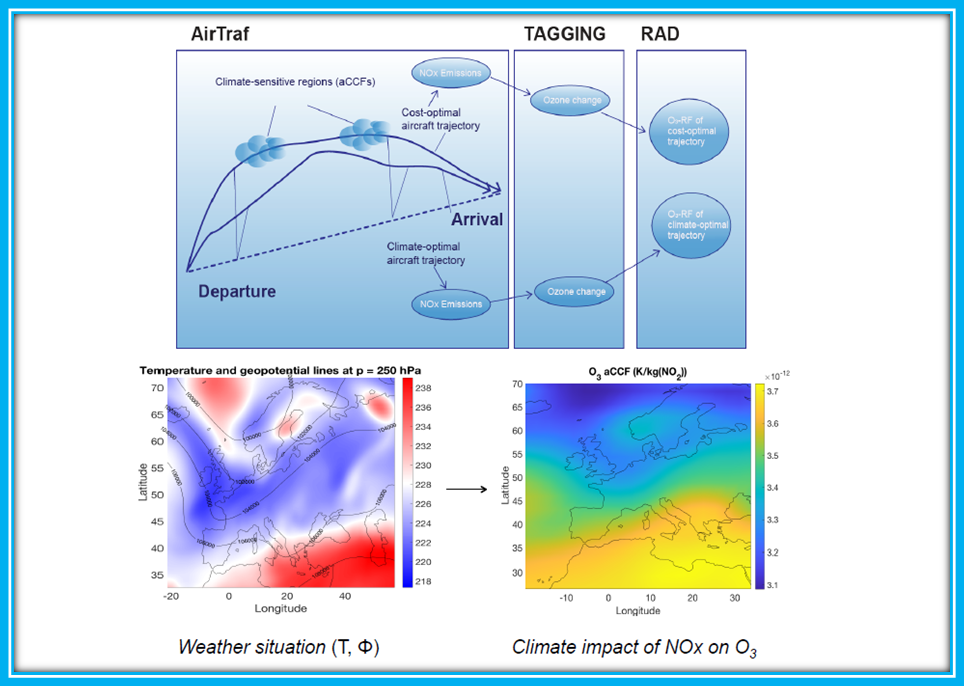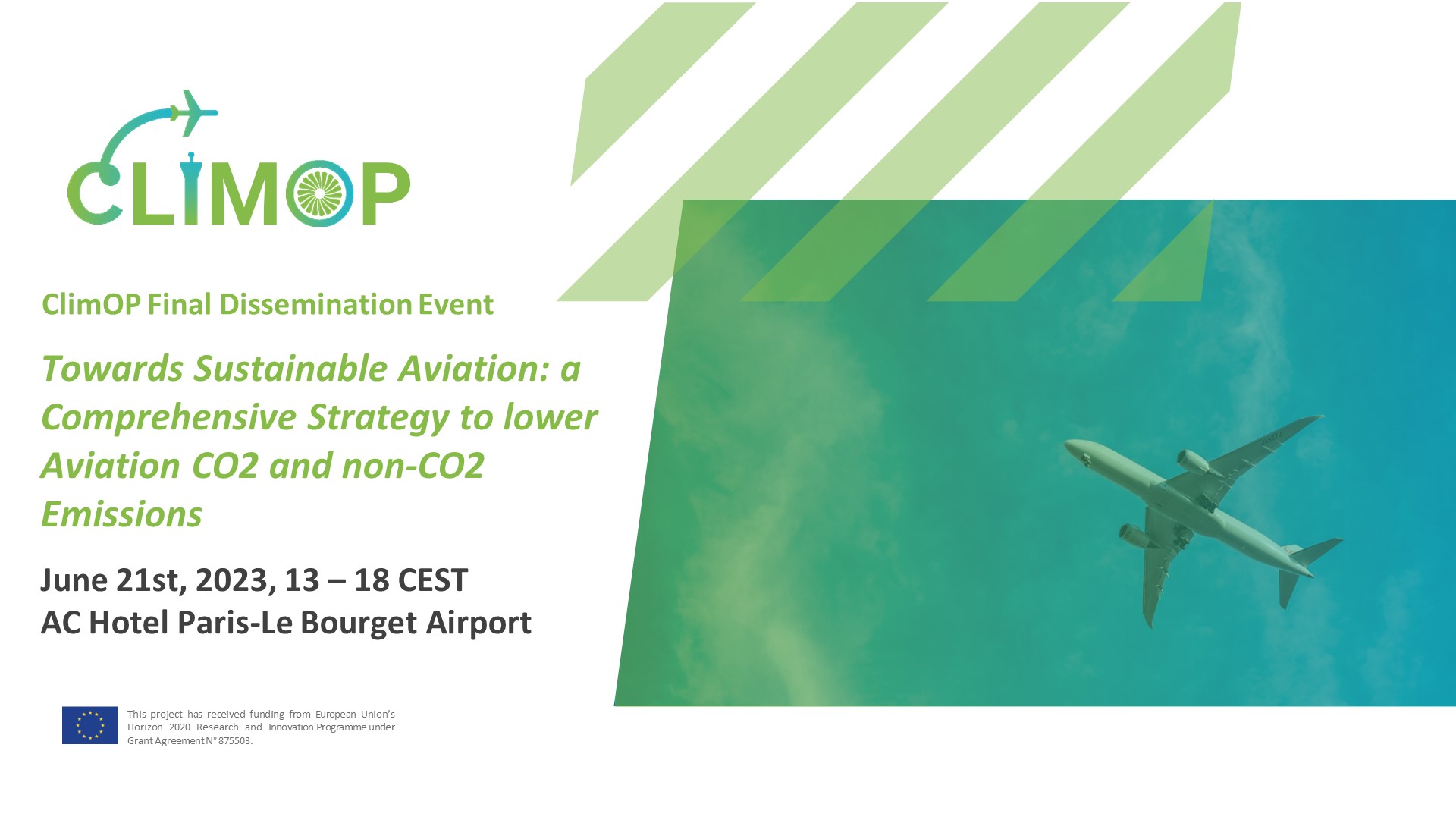At the beginning of June, ClimOp took part in the 10th Annual EMAC Symposium, where our colleagues from TU Delft presented their work on the analysis of NOx-O3 effects from optimised air traffic using algorithmic climate change functions (aCCFs). The EMAC Symposium is an annual gathering that aims to intensify the collaboration between the groups of experts that employ the MESSy (Modular Earth Submodel System) modelling system in their daily work. The software provides a standardized bottom-up implementation of Earth System Models, such as the atmospheric chemistry and the model physics-related submodels.
Our partners from TUD employ these models to verify the effectiveness of aCCFs in generating green trajectories that avoid climate-sensitive regions. With their work, they want to understand the extent to which the algorithmic climate change functions are useful in predicting NOx-O3 impact from aviation re-routing procedures and to define whether the radiative forcing of Ozone from climate-optimised air traffic is lower than for cost-optimised traffic at the end of the simulation.
Don’t lose the opportunity to get access to the poster they presented at the 10th Annual EMAC Symposium!




